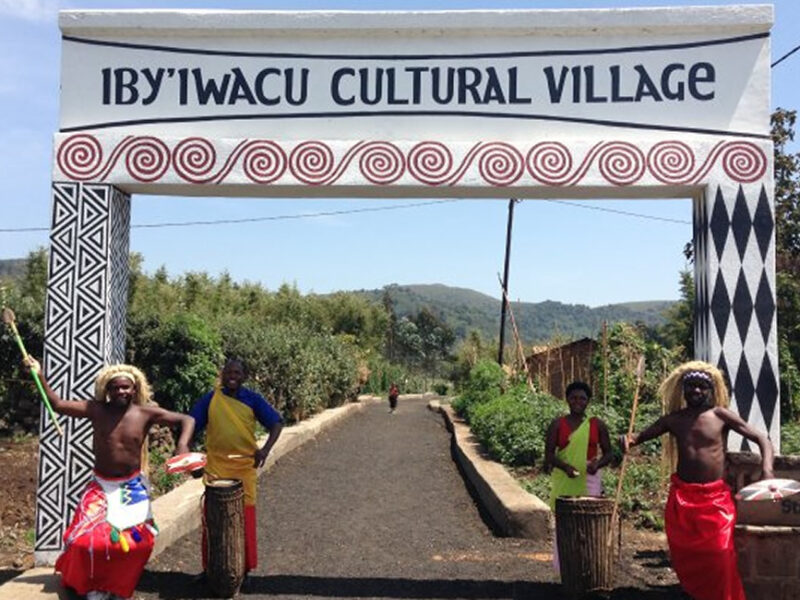Medicinal Plants
From its grassy savannas to its high mountains, the African continent is home to an amazing diversity of habitats and species, including more than 50,000 known plant species. To date, 1,034 plants have been identified in the Volcanoes National Park in Rwanda, with more being discovered all the time.
“We are interested in all aspects of gorilla life, including the plants that they eat,” said Dr. Katie Fawcett, Director of the Karisoke Research Center. Medicinal plants are of particular importance to Karisoke for two reasons — how they might be used by gorillas and to understand the potential degradation of the park caused by people searching for the plants.
Prosper Uwingeli, chief park warden for ORTPN at the Volcanoes National Park
added, “It is extremely important to study plants, and especially the individual species and their relationship to the biodiversity of the park.”
As this information is gathered, ORTPN uses it to help manage the park.
In 2005, Aimable Nsanzurwimo, a research assistant with DFGFI, started studying bamboo ecology at Karisoke. Since then he has helped increase the number of plant species known in VNP from 245 to 1,034. Plants continue to be discovered that are new to science and new to Rwanda. In addition to the documentation of new plants, antibacterial properties have been found in one of the species.
Since Dian Fossey’s time, DFGFI has been interested in plant species that the gorillas were using within the park. It was during that time that an herbarium was set up to begin cataloging and speciating these plants. Plant samples are pressed and recorded and copies are sent to the Rwandan National Herbarium at IRST. Currently, there are 1,000 preserved samples in the collection.
“We want to document the plants before they disappear because of climate change or other pressures on the park. The herbarium at Karisoke will be a major resource for future scientists who want to study the plants in the country of Rwanda,” said Aimable.
Two studies funded by DFGFI have begun to further explore the exciting question of the medicinal use of plants within human and gorilla populations.
Aimable Nsanzurwimo and a National University of Rwanda (NUR) student working on his thesis have started the process of looking at the use of plants by humans and gorillas.
Surveys have shown that up to 183 different plants are used by traditional healers. From that total, 110 are actually found growing wild in the VNP and the remaining 73 are cultivated by people in their gardens.
Of the 110 medicinal plants found in the national park, 55 are known to be consumed by gorillas.
Medicinal plants chosen by humans and gorillas are probably related to the most prevalent diseases. The mountain gorillas, they include respiratory, diarrheal, and intestinal parasitism. The main disease challenges for the local human population are similar. The cold, wet, environment of the area and close living situation is perfect for respiratory problems in people. Intestinal parasites numbers increase when clean water and adequate sanitation are limited. Gorilla fecal samples have demonstrated many of the same internal parasites also found in humans.
Over a six-month period, Nahayo collected plants eaten by gorillas for analysis and screening. He narrowed his selection to three species preferred by the gorilla population, Carduus leptacanthus (Common name: Ikigwarara), Pycnostachys goetzenii (Common name: Umutsinduka), Urtica massaica (Common name: Igisure Qrtie). These three plants were analyzed for their chemical properties and then tested for their medical effects on bacteria and parasites. Preliminary results show that Urtica massaica has antibiotic properties.
It has been discovered, by using chromatography, that similar plant species contained a number of organic properties known to have positive effects against bacteria and parasites which cause respiratory and parasitic diseases. This knowledge leads to more questions for researchers, “Do the gorillas treat themselves deliberately, or does the constant intake of plant material end up being a preventive measure?”
This is just the beginning of the questions the researchers are asking. There are another 52 known plants to be analyzed which are used by traditional healers and are also consumed by gorillas. What about the other plants eaten by gorillas not used by traditional healers? In the future, how does climate change affect the plant population? Protection of areas such as Volcanoes National Park, and the biodiversity within, can lead to amazing benefits for mankind.
Wouldn’t it be ironic that an endangered species like the mountain gorilla could save millions of human lives through discoveries found in their medicinal plants?
To learn more about the current research at the Karisoke research center please visit their website: www.gorillafund.org
Photo cutlines:
National Rwanda University Students interview a farmer living next to the Volcanoes National Park about the plants they use for medicinal purposes.
The silverback Inshutee munches some greens in the Volcanoes National Park.
4. The mountain gorilla Ginseng eats some nettles in the Volcanoes National Park.

